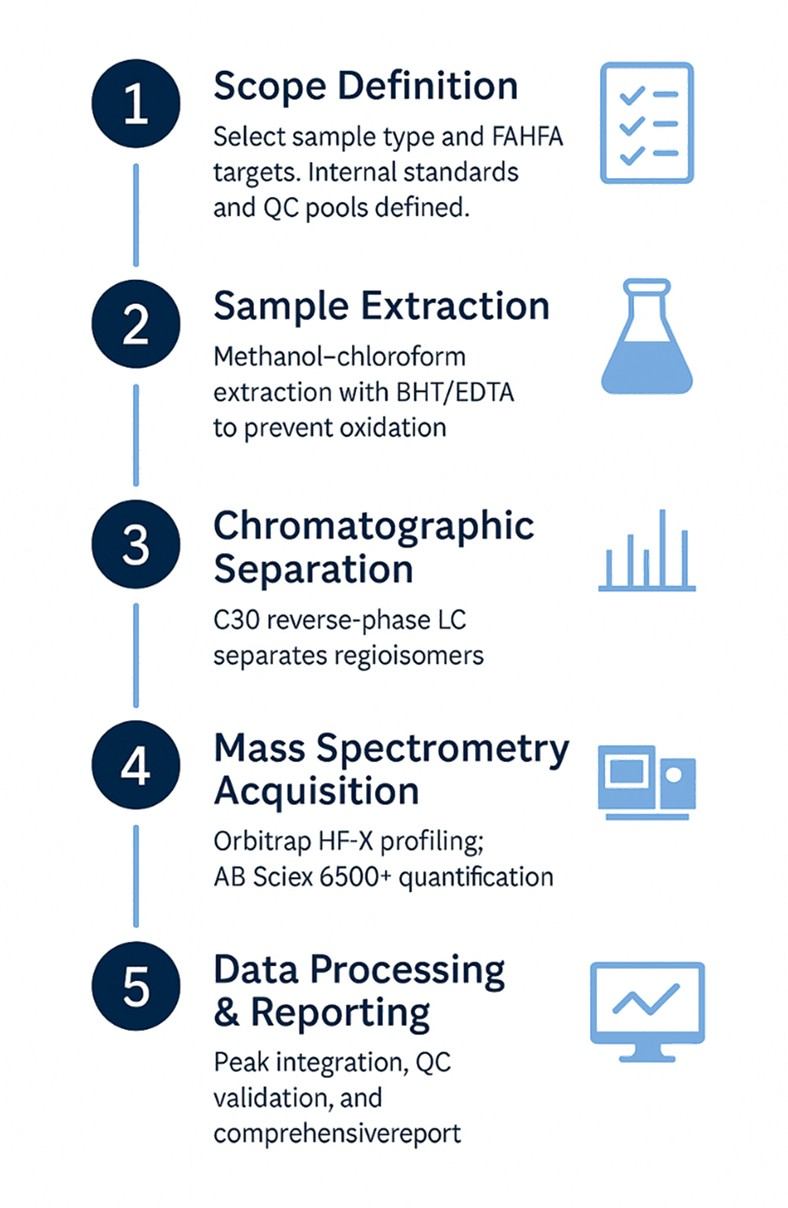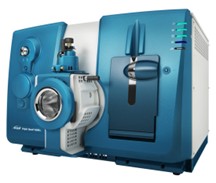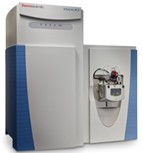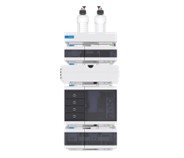Targeted FAHFA Profiling
Quantify prioritized families and regioisomers (e.g., PAHSAs, OAHFAs, SAHFAs) with internal-standard calibration.
Fatty acid esters of hydroxy fatty acids (FAHFAs) are a unique class of endogenous lipids formed through the esterification of a hydroxy fatty acid and a long-chain fatty acid. Unlike conventional lipids, FAHFAs exhibit regioisomeric diversity, meaning their biological function varies depending on the position of the ester linkage—such as 9-PAHSA or 5-OAHSA.
These compounds were first recognized for their ability to modulate glucose metabolism, lipid homeostasis, and immune signaling, making them an important focus in modern lipidomics research. Structurally, FAHFAs combine hydrophobic and hydroxyl-functional domains, contributing to their stability within biological membranes and their interaction with lipid-metabolizing enzymes.
In biochemical studies, FAHFAs are now viewed as regulatory lipids that bridge metabolic and signaling pathways. Their abundance and isomeric patterns can indicate alterations in cellular lipid remodeling, oxidative stress response, or energy regulation—offering valuable insight into lipid metabolism under physiological or environmental change.

Targeted FAHFA Profiling
Quantify prioritized families and regioisomers (e.g., PAHSAs, OAHFAs, SAHFAs) with internal-standard calibration.

Isomer-Resolved Identification
Separate and confirm positional isomers using optimized reverse-phase LC and diagnostic MS/MS fragments.

Untargeted Discovery Screening
Flag unexpected FAHFA species and related hydroxy-lipid esters for follow-up targeted verification.

Absolute Quantification
Apply isotope-labeled analogs for concentration reporting in serum, plasma, tissues, cell pellets, and formulated materials.

Structural Confirmation
Validate ester linkage and hydroxy position via fragmentation mapping and retention-time orthogonality.

Comparative Lipidomics
Assess group differences with normalized peak areas, effect-direction summaries, and optional pathway context.
The list below shows representative families and regioisomers commonly included in our panels. Final targets can be expanded or customized to your matrix and study goals.
| FAHFA Family (Acyl Donor → Hydroxy-Acyl) | Representative Regioisomers & Acyl-Chain Pairs | Notes |
|---|---|---|
| Palmitic → Hydroxystearic (PAHSA) | 5-, 7-, 8-, 9-, 10-, 11-, 12-, 13-PAHSA; 16:0/18:1(OH), 16:0/18:0(OH) | Core mammalian panel; well-characterized isomers |
| Oleic → Hydroxystearic (OAHSA) | 5-, 9-, 12-OAHSA; 18:1/18:1(OH), 18:1/18:0(OH) | Diet- and tissue-responsive species |
| Oleic → Hydroxylinoleic (OAHLA) | 9-, 13-OAHLA; 18:1/18:2(OH) | Oxidation-linked hydroxy-lipids |
| Stearic → Hydroxystearic (SAHSA) | 5-, 9-, 12-SAHSA; 18:0/18:1(OH), 18:0/18:0(OH) | Saturated backbones; stability-focused studies |
| Linoleic → Hydroxystearic (LAHSA) | 9-, 13-LAHSA; 18:2/18:1(OH), 18:2/18:0(OH) | Redox-sensitive; monitor with antioxidants |
| Palmitoleic → Hydroxystearic | 9-, 12- isomers; 16:1/18:1(OH) | Signaling-oriented MUFA pairs |
| Arachidonic → Hydroxystearic | 5-, 9-AAHSA; 20:4/18:1(OH), 20:4/18:0(OH) | ω-6 pathway extensions |
| EPA → Hydroxystearic (EPAHSA) | 12-, 15-EPAHSA; 20:5/18:1(OH), 20:5/18:0(OH) | ω-3–enriched nutrition panels |
| DHA → Hydroxystearic (DHAHSA) | 5-, 9-, 13-DHAHSA; 22:6/18:1(OH), 22:6/18:0(OH) | Neural and retina–oriented studies |
| Palmitic → Hydroxypalmitic (FAHPA) | 7-, 9-FAHPA; 16:0/16:0(OH), 18:0/16:0(OH) | HPA-based combinations; matrix-dependent |
| Very-Long-Chain FAHFAs | 16:0/24:0(OH), 18:0/24:1(OH), 18:1/26:0(OH) | Tissue-specific VLC species |
| Branched-Chain FAHFAs | iso-17:0/18:1(OH), anteiso-17:0/18:0(OH) | Optional add-on; exploratory profiling |
| Mono-/Poly-unsaturated FAHFAs (general) | 16:0/18:1(OH), 18:1/18:1(OH), 18:0/18:2(OH) | Broad coverage for signaling and redox contexts |
| Custom Targets | Client-specified acyl/hydroxy-acyl pairs and positions | We extend PRM/MRM lists on request |

Our FAHFA assays combine high-resolution discovery and targeted quantification platforms to ensure structural confidence and absolute accuracy.
Instrumentation
Chromatographic Conditions
Detection Mode & Parameters
This dual-platform strategy enables both comprehensive FAHFA discovery and precise quantitative validation, ensuring publication-grade data for research across metabolism, nutrition, and lipid biochemistry.

SCIEX Triple Quad™ 6500+ (Figure from Sciex)

Q Exactive HF-X MS

Agilent 1260 Infinity II HPLC (Figure from Agilent)
Explore our Lipidomics Solutions brochure to learn more about our comprehensive lipidomics analysis platform.

Metabolic Research
Map FAHFA isomer patterns to lipid and energy regulation.
Nutritional Science
Track diet-induced shifts in ω-3/ω-6 FAHFA families.
Redox Biology
Assess oxidation-sensitive FAHFAs under stress conditions.
Pharmacology & Screening
Evaluate compound effects on FAHFA biosynthesis and turnover.
Cellular Differentiation Studies
Profile FAHFAs during lineage commitment and remodeling
Microbiome–Lipid Interaction Studies
Explore how gut or skin microbiota influence FAHFA
| Sample Type | Minimum Amount | Preferred Container | Storage | Shipping | Pre-Analytical Notes |
|---|---|---|---|---|---|
| Serum / Plasma | ≥ 120 µL | 1.5–2 mL polypropylene cryovial, screw-cap, O-ring | −80 °C | Dry ice | Collect into EDTA or heparin; avoid hemolysis. No glycerol or detergents. Do not add antioxidants; we stabilize during extraction. |
| Whole Blood (not preferred) | ≥ 1 mL | EDTA/heparin tube | 4 °C (≤2 h) then separate plasma/serum and freeze | Cold packs to lab for immediate processing | Submit only if separation on site is impossible; contact us first to prevent ex vivo lipid change. |
| Animal / Human Tissue | ≥ 60 mg (wet) | Cryovial or pre-weighed foil packet inside vial | −80 °C (snap-frozen, no buffer) | Dry ice | Rinse quickly in cold PBS (optional), blot dry, snap-freeze. Avoid fixatives. Record tissue name and side/region. |
| Plant Tissue | ≥ 80 mg (fresh) or ≥ 30 mg (lyophilized) | Cryovial | −80 °C | Dry ice | Rapidly quench in liquid N₂; ship powdered/cryopulverized if possible to reduce thaw cycles. |
| Cultured Cells (adherent or suspension) | ≥ 1 × 10⁶ cells (pellet) | Low-bind microfuge tube | −80 °C | Dry ice | Wash once with cold PBS, remove supernatant completely, snap-freeze pellet. Record cell line, passage, seeding density, treatment. |
| Lipid Extracts (client-prepared) | ≥ 60 µL | Amber glass vial with PTFE-lined cap | −20 °C to −80 °C | Dry ice | Use LC–MS-grade solvents only. Indicate exact solvent system and any additives. Avoid plastic for long storage. |
| CSF / Urine | ≥ 300 µL | Polypropylene cryovial | −80 °C | Dry ice | Centrifuge to remove debris before freezing. No preservatives. |
| Microbial Pellets | ≥ 50 mg (wet) | Low-bind tube | −80 °C | Dry ice | Quench rapidly; avoid high-salt buffers and detergents. Provide growth medium and harvest OD if relevant. |
How are FAHFA isomers distinguished analytically?
Isomer resolution relies on LC separation (often C30 RP columns) plus diagnostic MS/MS fragments; optimized methods separate 5-/9-/12-regioisomers and confirm structure by targeted fragmentation.
Which sample types typically contain FAHFAs?
They have been measured in plasma/serum, adipose tissues, human breast milk, and other matrices using targeted LC-MS workflows.
How should samples be handled to preserve FAHFAs?
Minimize oxidation and thermal stress; keep samples cold, avoid repeated freeze–thaw, and use antioxidant/chelation strategies during prep to limit artifacts.
Do I need isotope-labeled standards for quantification?
Stable isotope internal standards are recommended to correct ionization variability and enable linear, reproducible calibration in targeted assays.
What columns and settings work best for isomer separation?
C30 reverse-phase columns with tailored gradients are widely used to separate positional FAHFA isomers before MS/MS confirmation.
Can results be mapped to pathways and standardized names?
Yes—use LIPID MAPS classification/nomenclature for standardized IDs and integrate quantitative outputs with lipid metabolism pathway resources for interpretation.
What if my panel needs uncommon FAHFA species?
Custom MRM/PRM lists can be extended using literature-reported FAHFA families and isomers documented in method papers and curated databases.

Services:
Online Inquiry
CONTACT US

